Properties and Uses of Sulfur for Blueberries

For tall garden blueberries, sun and acidic peat soil with good air permeability and moisture capacity are important. It is this soil composition that is most favorable for development, growth and fruiting. Colloidal sulfur will provide the necessary indicators of soil acidity.
Properties
The optimal pH level for blueberries is 3.5-3.8. At 4 units, the bushes begin to suffer from chlorosis, and at lower rates, the death of symbiotic fungi that form mycorrhiza (symbiosis) begins, with the help of which the plant receives the necessary substances, giving what the mushrooms need. Blueberries are one of the few plants that do not need fertile soil. Moreover, the introduction of organic substances can destroy the garden "ascetic". The thing is that cultivated blueberries were bred relatively recently - they are only 100 years old.
In the genome of the plant, there is still too strong inheritance of the properties of wild progenitors growing on impoverished swampy soils.
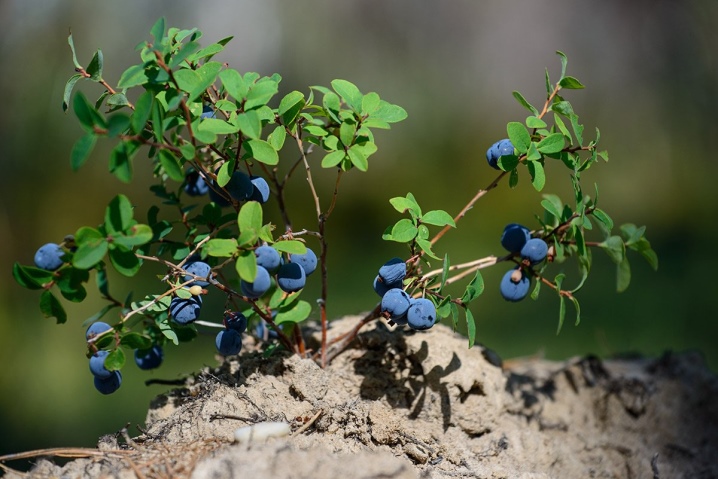
Naturally, the garden soil needs acidification, and the peat introduced during planting over time loses the properties necessary for the life of symbiotic mushrooms. The most suitable acidifier is granular or colloidal sulfur. The granulated product decomposes gradually, its action begins after about 6 months. By decomposing, the granules allow the culture to extract the necessary substances from the soil. Colloidal sulfur in the form of a solution begins to act immediately, but its effect is rather transient. This is a great solution if blueberries need immediate help, such as chlorosis treatment. Granulated sulfur is introduced at planting, mixing it with peat. Top dressing is applied in early spring or in the middle of summer.
Sulfur contains no heavy metals, chlorine and sodium. The substance not only acidifies the soil, but also has a positive effect on the quality of the berry, its taste and aroma. Sulfur prevents yellowing of green mass, helps to better assimilate macro- and microelements, strengthens the plant's immunity. With its help, blueberries are able to resist powdery mildew, scab, anthracnose, powdery mildew, etc.

Application rate
From 40 to 60 g of colloidal sulfur are introduced into the planting pit. For top dressing, the rates of sulfur use may be different: it all depends on the mechanical soil composition. For example, fertile and clayey soils have an increased cation exchange capacity and, as a result, application rates are noticeably higher than on sandy soils, light and not rich in humus. The table will help to determine the norms more precisely.
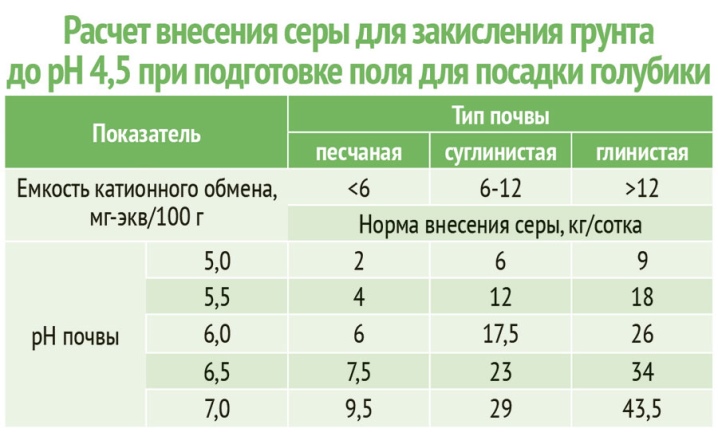
How to use?
The use of sulfur as a soil acidifier is possible in any form, it is only important to remember the speed of the expected effect. As mentioned above, for emergency care, it is best to use colloidal sulfur. In this form, the substance dissolves well in water and becomes more accessible for the necessary vital processes of symbiotic fungi. In other cases, conventional granular sulfur is preferable because it has a long lasting effect due to poor solubility.
Some people use car electrolyte, because it is already a ready-made 40% sulfuric acid solution.
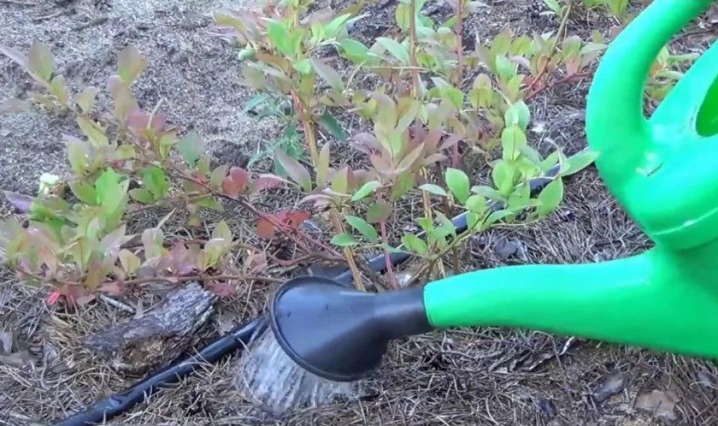
Top dressing with granulated sulfur takes place in early spring, at which time it is poured into the trunk circles. The calculation is made on the fact that moisture in the form of natural precipitation or during irrigation will begin to dissolve the granules, therefore, the soil will constantly acidify. It happens as follows: water, interacting with sulfur and soil bacteria, provokes the formation of sulfuric acid, which has an extremely beneficial effect on mycorrhiza and the subsequent yield of blueberries. It should be remembered that this is a long process, it stretches over several months and does not have an immediate effect. Based on the acid balance of the soil, the consumption can be 20-100 grams per square meter.

To use the electrolyte as a fertilizer for garden blueberries, it is best to purchase a new formulation from the store: the used one is not suitable for use. Water the blueberries with the solution three times per season:
- in early spring;
- before flowering;
- after harvest.
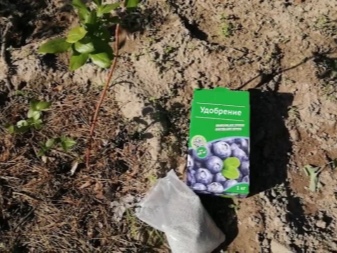
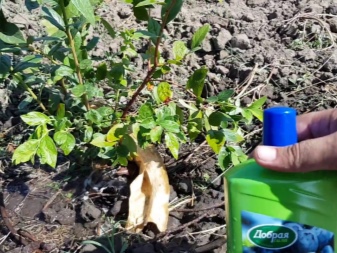
To properly feed in the spring, determine the level of acidity and dilute in 10 liters of water from 20 to 50 g. This volume is enough for a couple of bushes. The same proportions are observed for subsequent dressings. In the fall, blueberries need phosphorus and potassium salts to recover from the summer labor and lay the foundation for the future harvest: their vegetative buds are laid in the current season.
Recommended composition:
- potassium sulfate - 40 g;
- ammonium sulfate - 90 g;
- superphosphate - 110 g.
If granular sulfur is chosen for dressing, then the speed of its effect on natural processes increases markedly if it is dissolved in water using a construction mixer. Not all of it will dissolve, but some will nevertheless pass into another state of aggregation.
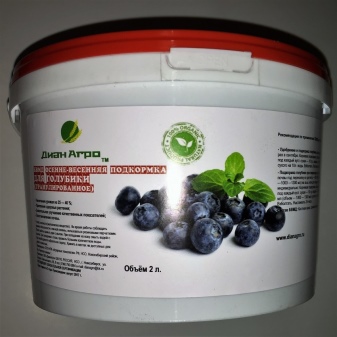
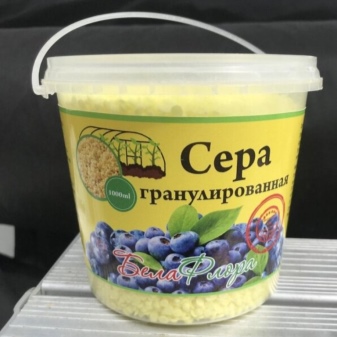













The comment was sent successfully.